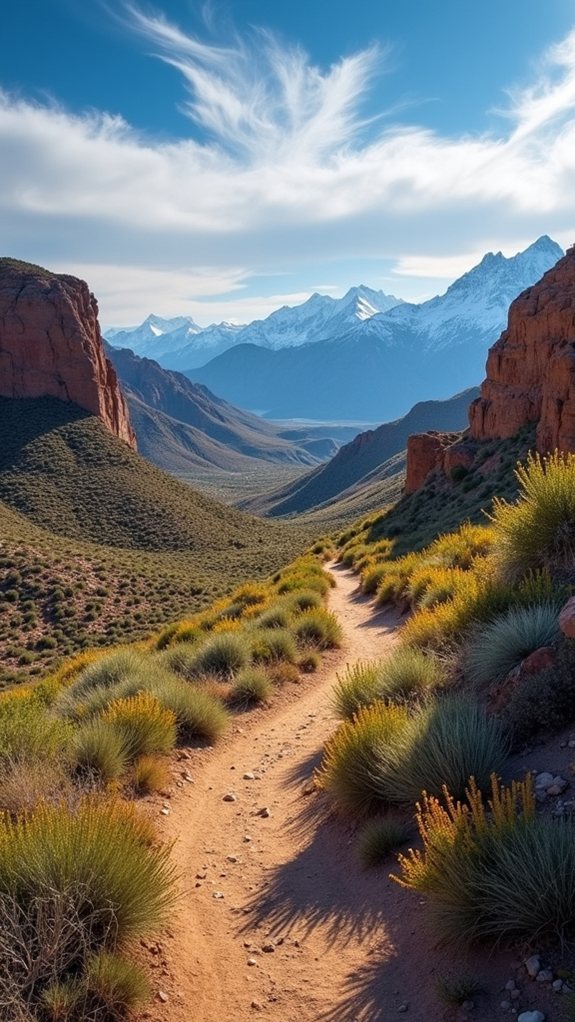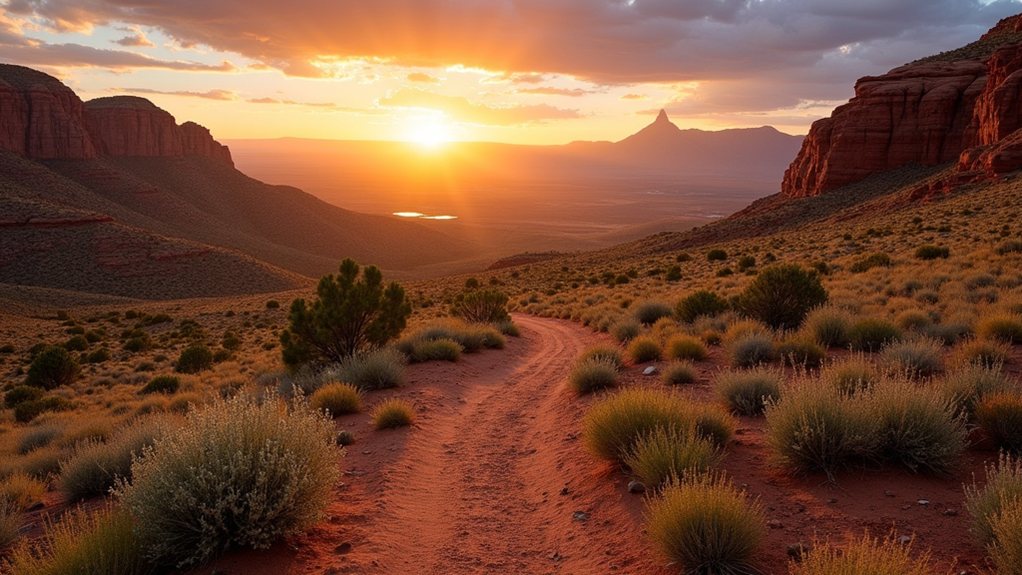Utah’s Eagle Mountain, once considered a mere bedroom community of the Beehive State’s capital, harbors natural treasures that most travelers zoom right past. Just minutes from Salt Lake City, this overlooked oasis nestles between the Lake Mountains and Cedar Valley Hills, offering over 250 miles of trails that range from family-friendly strolls to challenging summit hikes. The area’s unique landscape, where wide-open spaces meet urban amenities, gives visitors a perfect blend of tranquility and adventure without the crowds.
Trail Paradise Minutes From Salt Lake City

Where can you find a breathtaking outdoor paradise just 40 miles southwest of Salt Lake City? Eagle Mountain, positioned between the Lake Mountains and Cedar Valley Hills, offers adventure-seekers a perfect blend of accessible wilderness and community charm that’s surprisingly underappreciated by many Utah visitors.
With major highways connecting to Salt Lake City International Airport, this hidden gem combines the freedom of wide-open spaces with the convenience of nearby urban amenities.
Escape to wilderness without sacrificing convenience – Eagle Mountain delivers both in spectacular fashion.
The city boasts an impressive network of over 250 miles of trails, including 50+ miles of paved paths and 85+ miles dedicated to mountain biking for riders of all skill levels. Families can enjoy the gentle terrain of Hidden Hollow Trails, while history buffs might prefer exploring the legendary Pony Express Trail, which winds through scenic desert landscapes rich with pioneer stories.
For those seeking a challenge, the Lake Mountain Trail rewards hikers with breathtaking panoramic views after a moderately strenuous climb. Similar to Idaho’s popular Wood River Trail System, Eagle Mountain’s pathways provide year-round recreational opportunities that connect the city’s most scenic areas.
Eagle Mountain’s 53 neighborhood parks serve as community gathering spots, featuring modern playgrounds like those at Cory Wride Memorial Park with accessible structures for children of all abilities. Sports enthusiasts can take advantage of soccer fields, baseball diamonds, and increasingly popular pickleball courts throughout the city. The area’s peaceful mountain setting provides a serene backdrop for both active recreation and quiet contemplation.
The community calendar stays packed with educational events, often featuring wildlife experts like Stephen Briles and USU’s Dr. Joe Wilson, who share insights about local ecosystems. These gatherings demonstrate how Eagle Mountain, like other American communities with populations between 2,500 and 50,000, creates a unique identity that combines rural charm with progressive amenities. These gatherings, combined with seasonal festivals and community-driven sports programs, create a vibrant social atmosphere that celebrates outdoor living.
What makes Eagle Mountain truly special is its commitment to balancing growth with preservation. Development projects carefully consider environmental impact, ensuring that the scenic landscapes remain intact for future generations.
The city’s approach to sustainable tourism protects natural resources while supporting local businesses, creating an outdoor recreation destination that feels invigoratingly authentic. For those seeking freedom from crowds and commercialization, Eagle Mountain’s trails and terrain offer scenic surprises at every turn.






